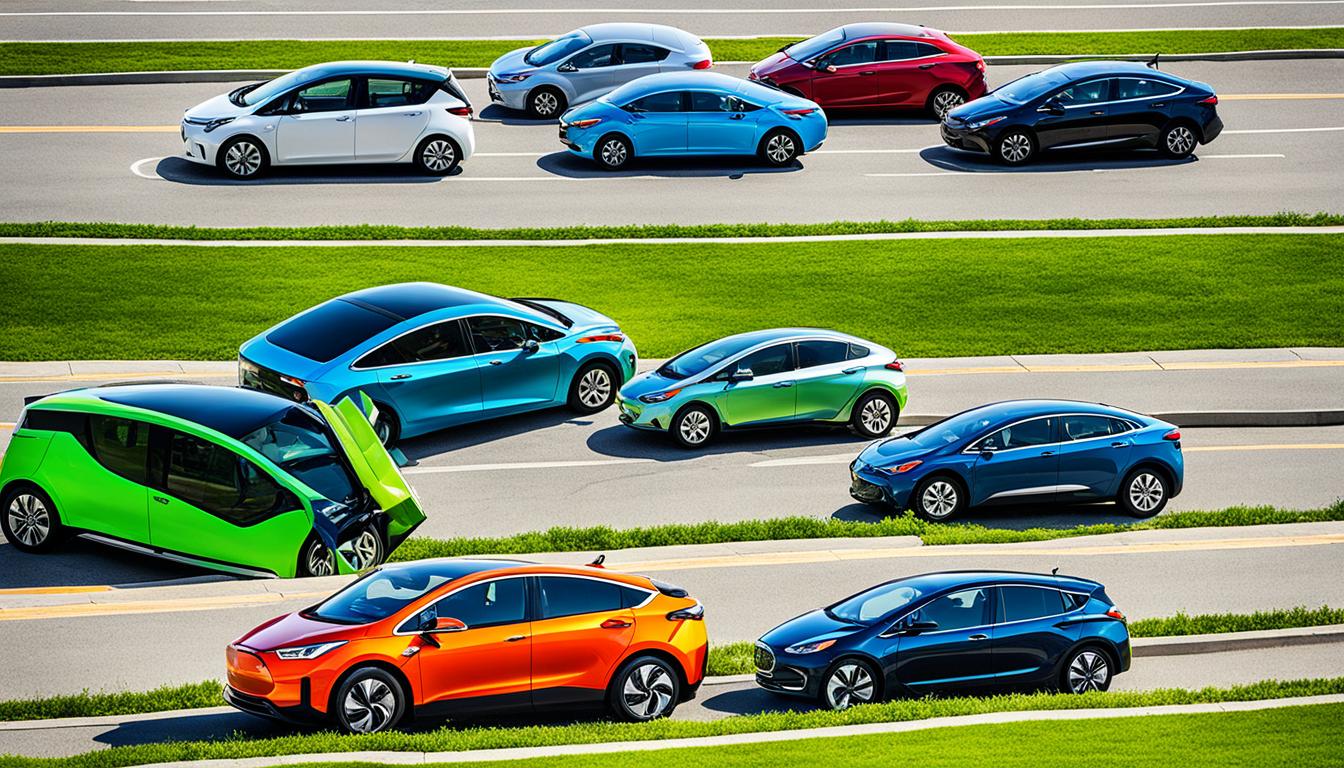What Are We Driving? Trends in Modern Transportation
The transportation industry plays a vital role in our lives, enabling the movement of people and products across various modes of transport. From cars to planes, trains to ships, the choices we have when it comes to getting from point A to point B are expanding rapidly. So, what are the trends shaping the vehicles we choose and the way we travel?
When it comes to vehicle options, there is a wide range to choose from, each with its own unique features and capabilities. Car manufacturers are constantly pushing the boundaries of automotive technology, offering advanced safety features, fuel efficiency, and connectivity options.
But it’s not just about the vehicles themselves; transportation choices are also evolving. We have seen a rise in ride-sharing services like Uber and Lyft, as well as the emergence of micromobility options such as electric scooters and bikes. These alternatives are changing the way we think about mobility and providing more opportunities for personalized transportation.
When selecting a vehicle, people have different driving preferences and considerations. Some prioritize fuel efficiency and environmental sustainability, opting for electric or hybrid vehicles. Others may prioritize space and comfort, choosing SUVs or minivans. The options are endless, catering to diverse needs and preferences.
Key Takeaways:
- The transportation industry offers a wide range of vehicle options with various features and capabilities.
- Transportation choices now include ride-sharing services and micromobility options.
- Individuals have different driving preferences and considerations when selecting a vehicle.
The Major Transportation Industry Trends 2024
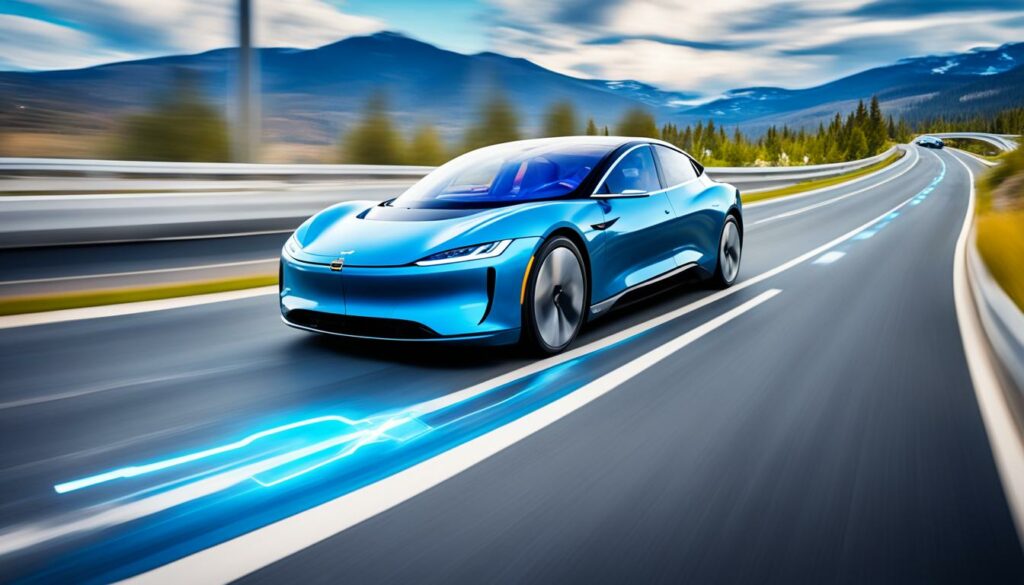
The transportation industry is constantly evolving, driven by technological advancements, changing customer expectations, and a growing focus on sustainability. In this section, we will explore the major transportation industry trends that are shaping the future of the transport sphere.
1. Integrated, Frictionless Travel
One of the key trends in the transportation industry is the rise of mobility-as-a-service (MaaS), which aims to provide seamless and integrated travel experiences for customers. MaaS platforms combine various transportation services, such as ride-sharing, public transportation, and bike-sharing, into a single, user-friendly interface. This trend emphasizes convenience, efficiency, and a more enjoyable travel experience for passengers.
2. Revolutionizing the Industry with Artificial Intelligence
Artificial Intelligence (AI) is revolutionizing the transportation industry, enabling companies to enhance their efficiency, safety, and customer experience. Around 20% of transportation companies are already leveraging AI to optimize operations, improve route planning, and enhance predictive maintenance. By harnessing AI-powered technologies, transport providers can make data-driven decisions to optimize their services, reduce costs, and improve overall performance.
3. Embracing Cloud-Based Systems
The adoption of cloud-based systems is another significant trend in the transportation industry. These systems provide scalability, flexibility, and innovative digital resources that enable companies to streamline their operations, improve collaboration, and enhance overall efficiency. Cloud-based platforms also facilitate real-time data analytics, empowering companies to make data-driven decisions and respond quickly to market changes.
4. Enhancing Traceability and Security
Traceability and security are of utmost importance in the transportation industry. To address this, visibility and anti-theft GPS technologies are gaining traction. These solutions enable companies to track shipments in real-time, ensuring efficient supply chain management and enhancing overall security. With increased traceability, transport providers can proactively address issues, minimize risks, and provide customers with peace of mind.
5. Emergence of Self-Driving Trucks and Regulatory Compliance
Self-driving trucks are poised to revolutionize the transportation industry by increasing efficiency, reducing operational costs, and improving safety. Companies are investing heavily in autonomous vehicle technology, aiming to utilize self-driving trucks for long-haul transportation. Additionally, regulatory compliance is a growing trend in the industry, as companies strive to meet safety and environmental standards while maximizing operational efficiency.
6. Harnessing the Power of Blockchain Technology
Blockchain technology is making waves in the transportation industry, particularly in logistics. By providing a decentralized and secure network, blockchain enables transparent and tamper-proof record-keeping, performance history tracking, and capacity monitoring. This technology improves efficiency, reduces fraud, and enhances trust among stakeholders in the transportation ecosystem.
7. Address Delivery and Drone Delivery
In response to the growing demand for convenience and faster delivery, address delivery and drone delivery are emerging trends in the transportation industry. Address delivery focuses on optimizing last-mile delivery by providing precise and accurate location data. On the other hand, drone delivery offers a potential solution for delivering packages quickly and efficiently, especially in remote areas or during emergencies.
The transportation industry is undergoing significant transformations as it embraces new technologies, adapts to changing customer expectations, and prioritizes sustainability. It is crucial for companies in the transport sphere to stay informed about these trends and implement winning strategies to navigate the evolving landscape successfully.
MaaS Goes Mainstream
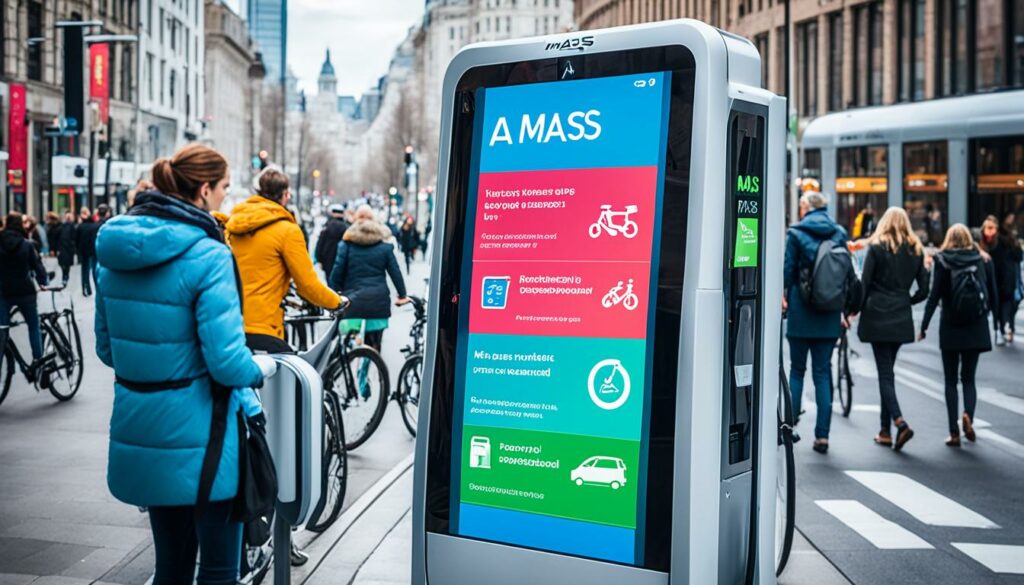
Mobility-as-a-service (MaaS) is a major trend in transportation that aims to simplify and enhance the travel experience. MaaS integrates various forms of transport services into a single mobility solution, accessible on demand. The goal is to provide travelers with a seamless and hassle-free journey, regardless of the mode of transportation they choose.
By 2028, the MaaS market size is projected to reach multimillion dollars, indicating the rapid growth and adoption of this concept. The focus of MaaS is on minimizing stoppages or checkpoints and prioritizing the destination over the specific mode of transportation. This customer-centric approach allows individuals to choose the most convenient and efficient way to reach their desired location.
To support the expansion of MaaS, several key developments are taking place within the transportation industry. One of the critical aspects is infrastructure optimization, ensuring that transportation networks are well-connected and can accommodate various modes of travel. Mobility hubs, strategically located centers that integrate different transportation services, play a vital role in facilitating seamless transfers and enhancing the overall travel experience.
MaaS also promotes ticketless travel, utilizing digital platforms and mobile applications to provide travelers with a streamlined ticketing process. This eliminates the need for physical tickets and reduces the time spent on purchase and validation procedures.
The rise of micromobility solutions, such as electric scooters and bikes, further complements the MaaS trend. These innovative options offer efficient and sustainable last-mile connections, allowing individuals to seamlessly transition between different modes of transportation.
“MaaS integrates various forms of transport services into a single mobility solution, accessible on demand.”
“The MaaS trend revolutionizes the way people travel by offering a unified platform that brings together various transport options. This not only simplifies the travel experience but also promotes sustainability and efficiency.”
Benefits of MaaS:
- Convenience: MaaS provides travelers with a one-stop solution, allowing them to plan and book their entire journey through a single platform.
- Cost-effectiveness: By offering a range of transport options, MaaS enables individuals to choose the most cost-effective mode of travel for their needs.
- Sustainability: By encouraging the use of shared and alternative modes of transportation, MaaS contributes to reducing congestion and environmental impact.
- Flexibility: MaaS allows individuals to adapt their travel plans based on real-time information and changing circumstances, ensuring a more flexible and dynamic travel experience.
| Key Features of MaaS | Benefits |
|---|---|
| Seamless integration of transport services | Efficient and convenient travel experience |
| Ticketless travel | Streamlined ticketing process |
| Infrastructure optimization | Connected and well-functioning transportation networks |
| Mobility hubs | Smooth transfers between different transportation modes |
| Micromobility options | Sustainable and efficient last-mile connections |
The Shift to Electric Vehicles

The transportation industry is currently undergoing a significant shift towards electric vehicles (EVs). The rising sales of EVs indicate a growing preference for sustainable transportation options. By 2030, EVs are projected to account for a substantial percentage of global automotive sales, driven by the need to reduce greenhouse gas emissions and combat climate change.
This transition towards electric vehicles extends beyond passenger cars. Many automakers are also investing in electric truck technology for commercial transportation. Moreover, there is a growing focus on the electrification of other modes of transport, such as ships and airplanes, to further promote sustainable transportation practices.
The introduction of plug-in hybrids is another step towards vehicle electrification. These vehicles combine electric and internal combustion engines, offering improved fuel efficiency and reduced emissions. The development and adoption of plug-in hybrid technology contribute to the broader goal of creating a sustainable future for the transportation industry.
Advantages of Electric Vehicles
- Environmental Benefits: Electric vehicles produce zero tailpipe emissions, reducing air pollution and mitigating the impact of transportation on climate change.
- Energy Efficiency: EVs are more energy-efficient than internal combustion engine vehicles, utilizing a higher percentage of stored energy from the grid.
- Lower Operating Costs: Electric vehicles have lower fuel and maintenance costs compared to traditional gasoline-powered cars, resulting in long-term financial savings.
- Enhanced Driving Experience: Electric vehicles offer smooth and quiet operation, instant torque, and advanced features, providing a unique driving experience for users.
- Reduced Dependence on Fossil Fuels: The widespread adoption of electric vehicles reduces reliance on finite fossil fuel resources, promoting energy independence.
The shift towards electric vehicles represents a significant step towards a more sustainable and environmentally friendly transportation industry. This transition not only benefits the planet but also presents numerous advantages to consumers, making electric vehicles a compelling choice for the future of transportation.
The Rise of Autonomous Vehicles
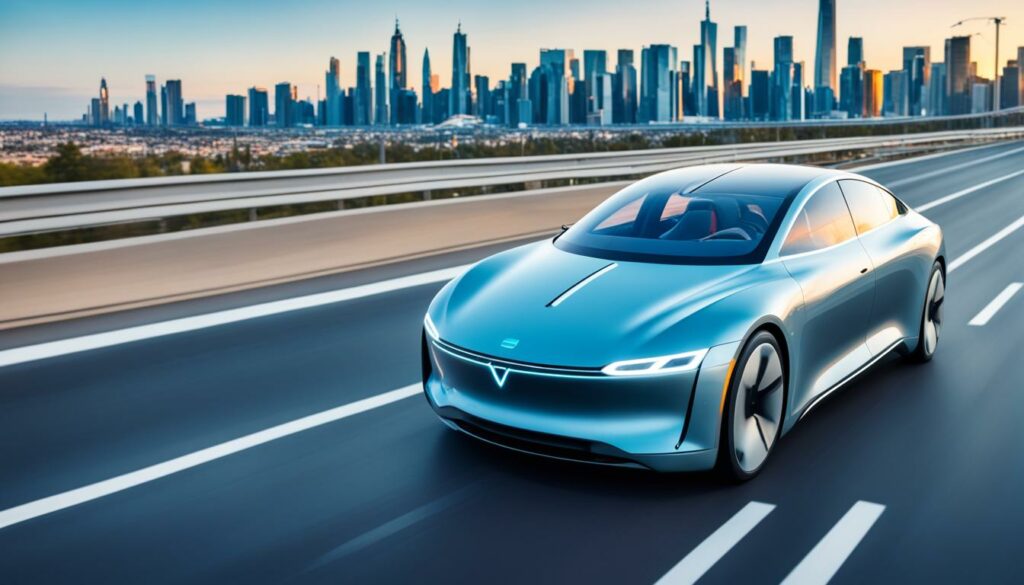
Autonomous vehicles are transforming the landscape of modern transportation, offering a glimpse into a future where self-driving cars become the norm. With companies like Tesla and Waymo at the forefront of driverless technology development, significant advancements have been made in autonomous vehicle technology.
Autonomous taxis and trucks are already being tested and deployed in select areas, showcasing the potential of this groundbreaking technology. These vehicles have the potential to revolutionize the way people and goods are transported, offering numerous benefits for both individuals and society as a whole.
One of the most significant advantages of autonomous vehicles is improved road safety. Self-driving cars have the potential to reduce human error, which is responsible for the majority of traffic accidents. By relying on advanced technologies like sensors and artificial intelligence, autonomous vehicles can make split-second decisions and react to road conditions more efficiently than human drivers.
“Autonomous vehicles have the potential to drastically reduce traffic accidents and save countless lives on the road.”
Moreover, autonomous vehicles can help alleviate traffic congestion. By optimizing the flow of vehicles and reducing the frequency of stop-and-go patterns commonly seen during rush hours, self-driving cars can improve traffic efficiency and decrease travel times for individuals.
Another significant advantage of autonomous vehicles is their potential to revolutionize public transportation. Autonomous taxis and ridesharing services can provide convenient and affordable mobility options for those who don’t own a car or prefer not to drive. These services can enhance the efficiency of transit systems, reduce the number of private vehicles on the road, and contribute to a more sustainable transportation ecosystem.
However, the widespread adoption of autonomous vehicles still faces several challenges and regulatory considerations. Concerns about safety in complex driving scenarios, liability issues, and the integration of self-driving cars with existing traffic infrastructure need to be addressed. Regulatory frameworks and standards must be established to ensure the safe and responsible deployment of autonomous vehicles on public roads.
In spite of these challenges, the future of autonomous vehicles is promising. Continued advancements in technology, ongoing research and development, and collaborative efforts between industry stakeholders and regulatory bodies will play a crucial role in unlocking the full potential of self-driving cars.
The Importance of Servitization
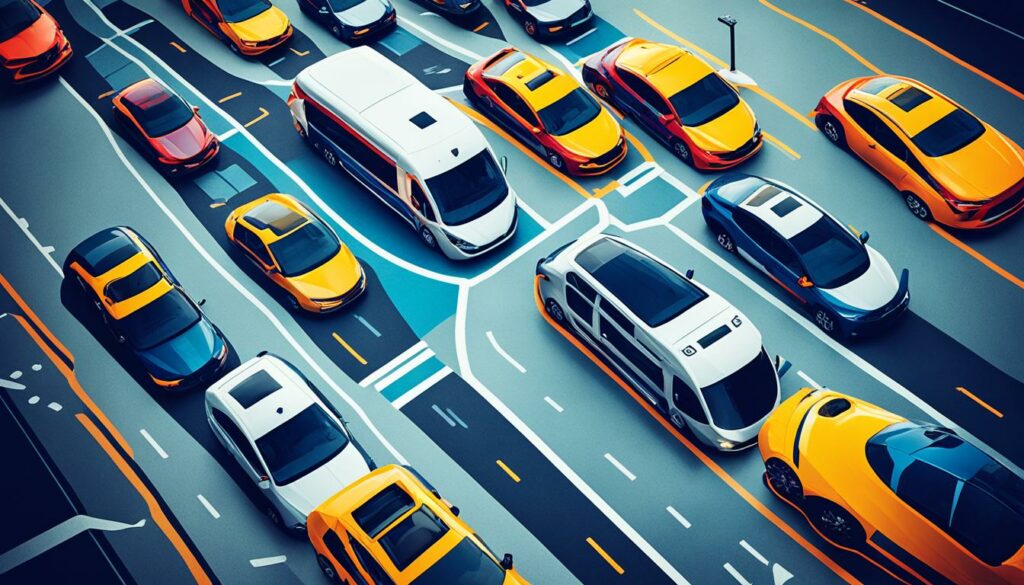
Servitization is a major trend in transportation, revolutionizing the way people access mobility services. With the rise of mobility-as-a-service (MaaS) providers like Uber and Didi Chuxing, the focus has shifted from private vehicle ownership to shared mobility options through a single platform. This trend offers customers convenience and flexibility, allowing them to choose from various transportation modes to meet their specific needs.
“Servitization in transportation promotes sustainable and inclusive solutions by reducing the reliance on individual car ownership. It provides a wide range of shared mobility options, making transportation more accessible and efficient for city dwellers.”
MaaS providers aim to create a seamless and integrated travel experience by offering services such as ride-sharing, car rentals, bike-sharing, and public transportation through a single app. This approach simplifies the process of planning and booking transportation, making it more convenient for users to get around. By utilizing shared mobility options, individuals can reduce traffic congestion, lower emissions, and contribute to a greener and more sustainable future.
One of the key advantages of servitization is the accessibility it provides to individuals who may not have access to private vehicles or traditional transportation options. By leveraging shared mobility services, individuals in underserved communities can gain access to reliable transportation, enhancing their overall mobility and improving their quality of life.
Servitization also aligns with the concept of mobility justice, which aims to address inequities in transportation access. By focusing on shared mobility, rather than individual vehicle ownership, servitization promotes a more equitable and inclusive transportation system, ensuring that transportation services are accessible to all individuals, regardless of their socio-economic status.
To illustrate the impact of servitization, consider the following table:
| Transportation Mode | Benefits |
|---|---|
| Ride-sharing | Convenient, cost-effective, reduces traffic congestion |
| Bike-sharing | Environmentally friendly, promotes physical activity |
| Public transportation | Affordable, reduces individual car usage |
Servitization offers individuals the freedom to choose transportation options that best suit their needs, providing a wide range of benefits to both users and society as a whole. By embracing shared mobility and mobility-as-a-service, the transportation industry is moving towards a more sustainable and accessible future.
Enhancing Last-Mile Delivery
Last-mile delivery plays a crucial role in the transportation industry, particularly with the rapid growth of ecommerce. This final leg of the delivery process represents a significant cost and is essential for providing a seamless and convenient shopping experience for consumers. To enhance last-mile delivery and meet the increasing demands of ecommerce, companies are implementing innovative and efficient delivery methods.
“Efficient last-mile delivery is essential for customer satisfaction and repeat business. It’s the final touchpoint between the retailer and the customer, and getting it right can make all the difference.”
– John Smith, CEO of ABC Retail
One method companies are utilizing is the integration of technology such as AI and autonomous vehicles. AI-powered algorithms help optimize delivery routes, ensuring packages are efficiently delivered to their destinations. Autonomous vehicles, including drones and self-driving delivery vans, are being explored as means to expedite last-mile deliveries, especially in densely populated areas where navigating through traffic can be challenging.
The rise of crowdsourcing platforms like Uber Eats and Postmates has also provided alternative last-mile delivery options. By leveraging independent contractors and utilizing existing transportation networks, these platforms enable swift and cost-effective delivery services.
Furthermore, companies are increasingly investing in advanced tracking and communication systems to enhance visibility and provide real-time updates to customers. By keeping customers informed about the status of their deliveries, these systems reduce uncertainty and improve overall satisfaction.
The Benefits of Efficient Last-Mile Delivery
An efficient last-mile delivery process offers several benefits for both consumers and businesses:
- Improved customer satisfaction: Timely and hassle-free deliveries enhance the overall shopping experience, leading to higher customer satisfaction and loyalty.
- Cost savings: Optimized delivery routes and the use of technology help reduce transportation costs, contributing to improved profitability for businesses.
- Sustainability: Efficient last-mile delivery methods can help minimize carbon emissions and reduce the environmental impact of transportation.
- Competitive advantage: By providing fast and reliable delivery services, businesses can gain a competitive edge in the ecommerce market.
In summary, enhancing last-mile delivery is crucial for meeting the rising demands of ecommerce and ensuring customer satisfaction. Through the implementation of efficient delivery methods, such as AI technology, autonomous vehicles, and crowdsourcing platforms, companies can streamline the last-mile process and provide timely and convenient delivery services. By prioritizing efficiency, businesses can gain a competitive advantage and position themselves for success in the evolving landscape of ecommerce.
Addressing Transportation Accessibility
The transportation industry is increasingly focusing on addressing transportation accessibility and equity. Underserved communities often face barriers to mobility, and there is a growing need to ensure transportation services are accessible to everyone.
One of the key approaches to creating more inclusive mobility is through the promotion of micro-mobility solutions. This includes encouraging modes of transport such as walking, biking, and scootering, which provide affordable and sustainable options for individuals of all backgrounds.
Furthermore, expanding public transportation options is vital in achieving equity in transportation. By improving and increasing public transit networks, individuals who rely on these services can benefit from improved connectivity and access to essential destinations like work, healthcare facilities, and educational institutions.
“Transportation accessibility is crucial for creating a more equitable society, where everyone has equal opportunities to access essential services and participate in socio-economic activities.”
The use of technology is also playing a significant role in addressing mobility inequalities. By leveraging data collection and analysis, transportation authorities can gain insights into the specific needs of different communities and develop targeted solutions to improve accessibility.
Technology-enabled Innovations
A notable example of technology-enabled innovation is the integration of ride-sharing services with public transit systems. By leveraging ride-sharing platforms, individuals can seamlessly connect to public transportation hubs and overcome first-mile and last-mile connectivity challenges.
Moreover, intelligent transportation systems equipped with real-time data can help optimize routes, reduce congestion, and enhance the overall efficiency of transportation networks, ultimately improving accessibility for all.
Promoting Collaboration and Partnerships
Addressing transportation accessibility requires collaboration between public and private stakeholders. Governments, transportation authorities, and service providers must work together to identify gaps in transportation services and implement measures to bridge those gaps effectively.
Furthermore, partnerships with community-based organizations can help ensure that the specific transportation needs of underserved communities are addressed. These collaborations can lead to tailored solutions that enhance mobility and accessibility, creating a more equitable and inclusive transportation system.
The Changing Workforce in the Trucking Sector
The trucking industry is currently facing a significant labor shortage, resulting in a high demand for drivers. The aging workforce and challenging work conditions are two leading factors contributing to this shortage.
Efforts are underway to address the driver shortage and improve the labor challenges in the trucking industry. One solution is to increase driver pay, ensuring that drivers are fairly compensated for their essential role in transportation. Additionally, improving work conditions and creating a positive working environment can help attract and retain more drivers.
Another crucial aspect of addressing the labor challenges in the trucking industry is changing the image of truckers. By promoting the trucking profession as a valuable and respected career choice, more individuals may consider pursuing a career in the industry.
“The trucking industry plays a vital role in ensuring the smooth flow of goods and products. Addressing the labor challenges is crucial for the sustainability and growth of the industry.”
Despite the labor challenges, the trucking industry remains a crucial component of transportation. Truck drivers are essential for delivering goods across the country and supporting various sectors of the economy.
To provide a comprehensive overview, here is a table showcasing the main labor challenges and potential solutions in the trucking industry:
| Labor Challenges | Potential Solutions |
|---|---|
| Driver shortage | Increase driver pay Improve work conditions Enhance driver benefits and incentives Invest in driver training programs |
| Aging workforce | Attract younger generations through targeted recruitment Offer apprenticeships and mentorship programs Provide career advancement opportunities |
| Challenging work conditions | Implement safety measures and regulations Improve trucking infrastructure and facilities Enhance driver comfort and well-being on the road |
By addressing these labor challenges, the trucking industry can secure a strong and sustainable workforce, ensuring the efficient movement of goods and contributing to the overall success of the transportation sector.
Conclusion
The transportation industry is currently undergoing major transformations as a result of technological advancements, a growing focus on sustainability, and shifting consumer preferences. Electric vehicles, autonomous vehicles, servitization, and last-mile delivery optimization are some of the key trends that are shaping the future of transportation.
With the rise of electric vehicles, the industry is moving towards a more sustainable and eco-friendly mode of transportation. The development of autonomous vehicles holds the potential to revolutionize the way people and goods are transported, offering improved safety and efficiency. Servitization, or the shift towards mobility-as-a-service, is providing consumers with multiple mobility options through a single platform, reducing the need for private vehicle ownership.
Last-mile delivery optimization is becoming increasingly important in the era of e-commerce, where efficient and timely delivery is crucial. By leveraging technology such as AI and autonomous vehicles, companies are striving to improve last-mile delivery services. Additionally, addressing transportation accessibility and workforce challenges are vital considerations for the industry to ensure inclusivity and overcome labor shortages.
As technology continues to advance and societal needs evolve, the transportation industry will remain dynamic and adaptive. Embracing these transportation trends will pave the way for a more efficient, sustainable, and inclusive industry in the future.
FAQ
What trends are shaping modern transportation?
Trends in modern transportation include the shift to electric vehicles, the rise of autonomous vehicles, the importance of servitization, enhancing last-mile delivery, addressing transportation accessibility, and the changing workforce in the trucking sector.
Why are electric vehicles becoming more popular?
Electric vehicles are becoming more popular due to their ability to reduce greenhouse gas emissions and combat climate change. Additionally, advancements in technology have increased their range and charging infrastructure.
What are autonomous vehicles?
Autonomous vehicles, also known as self-driving cars, are vehicles that can operate without human intervention. They use various technologies such as sensors, cameras, and artificial intelligence to navigate and make driving decisions.
What is servitization in transportation?
Servitization refers to the shift in focus from private vehicle ownership to access to mobility services. This trend is driven by the rise of mobility-as-a-service (MaaS) providers who offer multiple transportation options through a single platform.
How is last-mile delivery being improved?
Last-mile delivery is being improved through the use of technology such as AI, autonomous vehicles, and crowdsourcing. Companies are exploring options like autonomous vehicles and drones for deliveries, and platforms like Uber Eats and Postmates offer alternative delivery options.
What is being done to address transportation accessibility issues?
To address transportation accessibility issues, there are efforts to promote micro-mobility solutions like walking, biking, and scootering. Expanded public transportation options and the use of technology to address mobility inequalities are also part of this trend.
Why is there a truck driver shortage?
The trucking sector is experiencing a major labor shortage due to factors such as the aging workforce and challenging work conditions. Efforts are being made to increase driver pay, improve work conditions, and change the image of truckers to attract more people to the industry.
How is the transportation industry adapting to changing trends?
The transportation industry is adapting to changing trends by investing in electric and autonomous vehicle technology, embracing servitization and last-mile delivery optimization, addressing transportation accessibility and equity issues, and addressing the labor challenges in the trucking sector.

